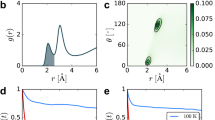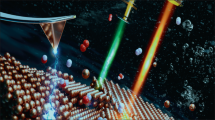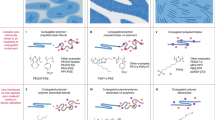Abstract
The past two decades have shown that the exploration of properties on the nanoscale can lead to substantially new insights regarding fundamental issues, but also to novel technological perspectives. Simultaneously it became so fashionable to decorate activities with the prefix 'nano' that it has become devalued through overuse. Regardless of fashion and prejudice, this article shows that the crystallizing field of 'nanoionics' bears the conceptual and technological potential that justifies comparison with the well-acknowledged area of nanoelectronics. Demonstrating this potential implies both emphasizing the indispensability of electrochemical devices that rely on ion transport and complement the world of electronics, and working out the drastic impact of interfaces and size effects on mass transfer, transport and storage. The benefits for technology are expected to lie essentially in the field of room-temperature devices, and in particular in artificial self-sustaining structures to which both nanoelectronics and nanoionics might contribute synergistically.
This is a preview of subscription content, access via your institution
Access options
Subscribe to this journal
Receive 12 print issues and online access
$259.00 per year
only $21.58 per issue
Buy this article
- Purchase on Springer Link
- Instant access to full article PDF
Prices may be subject to local taxes which are calculated during checkout







Similar content being viewed by others
References
Kudo, T. & Fueki, K. Solid State Ionics (Kodansha, Tokyo, 1990).
Maier, J. Physical Chemistry of Ionic Materials. Ions and Electrons in Solids (Wiley, Chichester, 2004).
Bruce, P. G. Solid State Electrochemistry (Cambridge Univ. Press, London, 1995).
Bouwmeester, H. J. M. & Gellings, P. J. Solid State Electrochemistry (CRC Press, New York, 1997).
Maier, J. Point defect thermodynamics: Macro- vs. nanocrystals. Electrochemistry 68, 395–402 (2000).
Maier, J. Aspects of nano-ionics, part I. Thermodynamic aspects and morphology of nano-structured ion conductors. Solid State Ionics 154, 291–301 (2002); Part II. Defect chemistry and ion transport in nanostructured materials. Solid State Ionics 157, 327–334 (2003); Part III. Nano-sized mixed conductors. Solid State Ionics 148, 367–374 (2002).
Maier, J. Nano-ionics: Trivial and non-trivial size effects on ion conduction in solids. Z. Phys. Chem. 217, 415–436 (2003).
Maier, J. Space charge regions in solid two phase systems and their conduction contribution. III: Defect chemistry and ionic conductivity in thin films. Solid State Ionics 23, 59–67 (1987).
Brus, L. E. Electron–electron and electron–hole interactions in small semiconductor crystallites: The size dependence of the lowest excited electronic state. J. Chem. Phys. 80, 4403–4409 (1984).
Reed, M. & Kirle, W. P. Nanostructure Physics and Fabrication (Academic, New York, 1989).
Haug, R. J. & von Klitzing, K. Prospects for research on quantum dots and single-electron transistors. FED J. 6, 4–12 (1995).
Ploog, K. in Semiconductor Interfaces: Formation and Properties (eds Lay, G. L., Derrien, J. & Boccara, N.) 10–42 (Springer Proceedings in Physics 22, Berlin, 1987).
Sze, S. M. Semiconductor Devices (Wiley, New York, 1985).
Jonker, G. H. Some aspects of semiconducting barium titanate. Solid State Electronics 7, 895–903 (1964).
Seiyama, T., Kato, A., Fujiishi, K. & Nagatani, M. A new detector for gaseous components using semiconductive thin films. Anal. Chem. 34, 1502–1503 (1962).
Maier, J. Ionic transport in nano-sized systems. Solid State Ionics 175, 7–12 (2004).
Maier, J. Ionic conduction in space charge regions. Prog. Solid State Chem. 23, 171–263 (1995).
Tuller, H. L. Ionic conduction in nanocrystalline materials. Solid State Ionics 131, 143–157 (2000).
Schoonman, J. Nanostructured materials in solid state ionics. Solid State Ionics 135–137, 5–19 (2005).
Jamnik, J. & Maier, J. Nanocrystallinity effects in lithium battery materials. (Aspects of nano-ionics. Part IV). Phys. Chem. Chem. Phys. 5, 5215–5220 (2003).
Despotuli, A. L. & Nikolaichik, V. I. A step towards nanoionics. Solid State Ionics 60, 275–278 (1993).
Chapman, D. L. A contribution to the theory of electrocapillarity. Phil. Mag. S. 6 25, 475–481 (1913).
Kliewer, K. L. & Koehler, J. S. Space charge in ionic crystals. I. General approach with application to NaCl. Phys. Rev. A 140, A1226–A1240 (1965).
Poeppel, R. B. & Blakely, J. M. Origin of equilibrium space charge potentials in ionic crystals. Surf. Sci. 15, 507–523 (1969).
Maier, J. Defect chemistry and conductivity effects in heterogeneous solid electrolytes. J. Electrochem. Soc. 134, 1524–1535 (1987).
Jamnik, J., Maier, J. & Pejovnik, S. Interfaces in solid ionic conductors: Equilibrium and small signal picture. Solid State Ionics 75, 51–58 (1995).
Puin, W., Rodewald, S., Ramlau, R., Heitjans, P. & Maier, J. Local and overall ionic conductivity in nanocrystalline CaF2 . Solid State Ionics 131, 159–164 (2000).
Chiang, Y.-M., Lavik, E., Kosacki, I., Tuller, H. L. & Ying, J. Y. Defect and transport properties of nanocrystalline CeO2−x . Appl. Phys. Lett. 69, 185–187 (1996).
Tschöpe, A., Sommer, E. & Birringer, R. Grain size-dependent electrical conductivity of polycrystalline cerium oxide. I. Experiments. Solid State Ionics 139, 255–265 (2001).
Vollmann, M. & Waser, R. Grain boundary defect chemistry of acceptor-doped titanates: Space charge layer width. J. Am. Ceram. Soc. 77, 235–243 (1994).
Denk, I., Claus, J. & Maier, J. Electrochemical investigations of SrTiO3 boundaries. J. Electrochem. Soc. 144, 3526–3536 (1997).
Guo, X., Fleig, J. & Maier, J. Separation of electronic and ionic contributions to the grain boundary conductivity in acceptor-doped SrTiO3 . J. Electrochem. Soc. 148, J50–J53 (2001).
Leonhardt, M., Jamnik, J. & Maier, J. In situ monitoring and quantitative analysis of oxygen diffusion through Schottky-barriers in SrTiO3 bicrystals. Electrochem. Solid-State Lett. 2, 333–335 (1999).
Kim, S. & Maier, J. On the conductivity mechanism of nanocrystalline ceria. J. Electrochem. Soc. 149, J73–J83 (2002).
Maier, J. Space charge regions in solid two-phase systems and their conduction contribution. I. Conductance enhancement in the system ionic conductor–'inert' phase and application on AgCl·Al2O3 and AgCl·SiO2 . J. Phys. Chem. Solids 46, 309–320 (1985).
Liang, C. C. Conduction characteristics of lithium iodide aluminium oxide solid electrolytes. J. Electrochem. Soc. 120, 1289–1292 (1973).
Chung, R. W. & de Leeuw, S. W. Ionic conduction in LiI-alpha, gamma-alumina: molecular dynamics study. Solid State Ionics 175, 851–855 (2004).
Maier, J. & Reichert, B. Ionic transport in heterogeneously and homogeneously doped thallium(I)-chloride. Ber. Bunsenges. Phys. Chem. 90, 666–670 (1986).
Lee, J.-S., Adams, S. & Maier, J. Transport and phase transition characteristics in AgI:Al2O3 composite electrolytes. Evidence for a highly conducting 7-layer AgI polytype. J. Electrochem. Soc. 147, 2407–2418 (2000).
Yamada, H., Bhattacharyya, A. J. & Maier, J. Extremely high silver ion conductivity in the composites of silver halide (AgBr, AgI) and mesoporous alumina. Adv. Funct. Mater. (in the press).
Maekawa, H., Tanaka, R., Sato, T., Fujimaki, Y. & Yamamura, T. Size-dependent ionic conductivity observed for ordered mesoporous alumina-LiI composite. Solid State Ionics 175, 281–285 (2004).
Hariharan, K. & Maier, J. Enhancement of the fluoride vacancy conduction in PbF2:SiO2 and PbF2:Al2O3 composites. J. Electrochem. Soc. 142, 3469–3473 (1995).
Bhattacharyya, A. J. & Maier, J. Second phase effects on the conductivity of non-aqueous salt solutions: 'soggy sand electrolytes'. Adv. Mater. 16, 811–814 (2004).
Croce, F., Appetechi, G. B., Persi, L. & Scrosati, B. Nanocomposite polymer electrolytes for lithium batteries. Nature 394, 456–458 (1998).
Wieczorek, W., Florjanczyk, Z. & Stevens, R. Composite polyether based solid electrolytes. Electrochim. Acta 40, 2251–2258 (1995).
Kasemägi, H., Aabloo, A., Klintenberg, M. K. & Thomas, J. O. Molecular dynamics simulation of the effect of nanoparticle fillers on ion motion in a polymer host. Solid State Ionics 168, 249–254 (2004).
Maier, J. & Lauer, U. Ionic contact equilibria in solids — implications for batteries and sensors. Ber. Bunsenges. Phys. Chem. 94, 973–978 (1990).
Maier, J. Space charge regions in solid two phase systems and their conduction contribution. II. Contact equilibrium at the interphase of two ionic conductors and the related conductivity effect. Ber. Bunsenges. Phys. Chem. 89, 355–362 (1985).
Shahi, K. & Wagner, J. B. Fast ion transport in silver halide solid solutions and multiphase systems. Appl. Phys. Lett. 37, 757–759 (1980).
Sata, N., Eberman, K., Eberl, K. & Maier, J. Mesoscopic fast ion conduction in nanometre-scale planar heterostructures. Nature 408, 946–949 (2000).
Jin-Phillipp, N. Y. et al. Structures of BaF2-CaF2 heterolayers and their influences on ionic conductivity. J. Chem. Phys. 120, 2375–2381 (2004).
Petuskey, W. Interfacial effects on Ag:S nonstoichiometry in silver sulfide/alumina composites. Solid State Ionics 21, 117–129 (1986).
Beaulieu, L. Y., Larcher, D., Dunlap, R. A. & Dahn, J. R. Reaction of Li with grain-boundary atoms in nanostructured compounds. J. Electrochem. Soc. 147, 3206–3212 (2000).
Brankovic, S. R., Wang, J. X. & Adžić, R. R. A. Pt submomolayers on Ru nanoparticles. a novel low Pt loading, high CO tolerance fuel cell electrocatalyst. Electrochem. Solid-State Lett. 4, A217–A220 (2001).
Simkovich, G. & Wagner, C. The role of ionic point defects in the catalytic activity of ionic crystals. J. Catal. 1, 521–525 (1962).
Maier, J. & Murugaraj, P. The effect of heterogeneous doping on heterogeneous catalysis: Dehydrohalogenation of tertiary butyl chloride. Solid State Ionics 40/41, 1017–1020 (1990).
Lipowsky, R. in Springer Proceedings in Physics Vol. 50 (eds Falicov, L. M., Mejia-Lira, F. & Morán-López, J. L.) 158–166 (Springer, Berlin, 1990).
Hainovsky, N. & Maier, J. Simple phenomenological approach to premelting and sublattice melting in Frenkel disordered ionic crystals. Phys. Rev. B 51, 15789–15797 (1995).
Sata, N., Eberman, K., Eberl, K. & Maier, J. Mesoscopic fast ion conduction in nanometre-scale planar heterostructures. Nature 408, 946–949 (2000).
Guo, Y.-G., Lee, J.-S. & Maier, J. AgI nanoplates with mesoscopic superionic conductivity at room temperature. Adv. Mater. (in the press).
Balaya, P., Jamnik, J. & Maier, J. Mesoscopic size effects in nanocrystalline SrTiO3 . Appl. Phys. Lett. (submitted).
Heifets, E., Kotomin, E. A. & Maier, J. Semi-empirical simulations of surface relaxation for perovskite titanates. Surf. Sci. 462, 19–35 (2000).
Buffat, P. & Borel, J.-P. Size effect on the melting temperature of gold particles. Phys. Rev. A 13, 2287–2298 (1976).
Knauth, P., Schwitzgebel, G., Tschöpe, A. & Villain, S. Emf measurements on nanocrystalline copper-doped ceria. J. Solid State Chem. 140, 295–299 (1998).
Schroeder, A. et al. Excess free enthalpy of nanocrystalline silver, determined in a solid electrolyte cell. Solid State Ionics 173, 95–101 (2004).
Martin, T. P. In Festkörperprobleme, Advances in Solid State Physics (ed. Grosse, P.) 1–24 (Vieweg, Braunschweig, 1984).
Adams, S., Hariharan, K. & Maier, J. Interface effect on the silver ion conductivity during the crystallization of AgI-Ag2O-V2O5 glasses. Solid State Ionics 75, 193–201 (1995).
Maier, J. Composite electrolytes. Mater. Chem. Phys. 17, 485–498 (1987).
Trifonova, A. et al. Influence of the reductive preparation conditions on the morphology and on the electrochemical performance of Sn/SnSb. Solid State Ionics 168, 51–59 (2004).
Beevers, C. A. & Ross, M. A. S. The crystal structure of 'beta alumina' Na2O.11Al2O3 . Z. Krist. 97, 59–66 (1937).
Philips, J. C. Physics of High-Tc Superconductors (Academic, Boston, 1983).
Simon, A. Clusters of valence electron poor metals — structure, bonding and properties. Angew. Chem. Int. Edn Engl. 27, 159–183 (1988).
Maier, J. Nanoionics and soft materials science. In Nanocrystalline Metals and Oxides. Selected Properties and Applications (eds Knauth, P. & Schoonman, J.) 81–110 (Electronic Materials: Science & Technology Vol. 7, Kluwer Academic, Boston, Massachusetts, 2002).
Poizot, P., Laruelle, S., Grugeon, S., Dupont, L. & Tarascon, J.-M. Nano-sized transition-metal oxides as negative electrode materials for lithium-ion batteries. Nature 407, 496–499 (2000).
Li, H., Richter, G. & Maier, J. Reversible formation and decomposition of LiF clusters using transition metal fluorides as precursors and their application in rechargeable Li batteries. Adv. Mater. 15, 736–739 (2003).
Badway, F., Cosandey, F., Pereira, N. & Amatucci, G. G. Carbon metal fluoride nanocomposites. high-capacity reversible metal fluoride conversion materials as rechargeable positive electrodes for Li batteries. J. Electrochem. Soc. 150, A1318–A1327 (2003).
Balaya, P., Li, H., Kienle, L. & Maier, J. Fully reversible homogeneous and heterogeneous Li storage in RuO2 with high capacity. Adv. Funct. Mater. 13, 621–625 (2003).
Aurbach, D. Review of selected electrode–solution interactions which determine the performance of Li and Li ion batteries. J. Power Sources 89, 206–218 (2000).
Bhattacharyya, A. J., Dollé, M. & Maier, J. Improved Li-battery electrolytes by heterogeneous doping of nonaqueous Li-salt solutions. Electrochem. Solid-State Lett. 7, A432–A434 (2004).
Kreuer, K.-D., Paddison, S. J., Spohr, E. & Schuster, M. Transport in proton conductors for fuel-cell applications: Simulations, elementary reactions, and phenomenology. Chem. Rev. 104, 4637–4678 (2004).
Schuster, M. F. H. & Meyer, W. H. Anhydrous proton conducting polymer. Annu. Rev. Mater. Res. 33, 232–261 (2003).
Zhou, Y. P., Feng, K., Sun, Y. & Zhou, L. A brief review on the study of hydrogen storage in terms of carbon nanotubes. Progr. Chem. 15, 345–350 (2003).
Schlapbach, L. & Züttel, A. Hydrogen-storage materials for mobile applications. Nature 414, 353–358 (2001).
Ma, R. Synthesis of boron nitride nanofibers and measurement of their hydrogen uptake capacity. Appl. Phys. Lett. 81, 5225–5227 (2002).
Jamnik, J., Kamp, B., Merkle, R. & Maier, J. Space charge influenced oxygen incorporation in oxides: in how far does it contribute to the drift of Taguchi sensors? Solid State Ionics 150, 157–166 (2002).
Barsan, N. & Weimar, U. Conduction model of metal oxide gas sensors. J. Electroceramics 7, 143–167 (2001).
Pan, X. Q., Fu, L. & Dominguez, J. E. Structure-property relationship of nanocrystalline tin dioxide thin films grown on sapphire. J. Appl. Phys. 89, 6056–6061 (2001).
Maier, J. Electrical sensing of complex gaseous species by making use of acid-base properties. Solid State Ionics 62, 105–111 (1993).
Holzinger, M., Fleig, J., Maier, J. & Sitte, W. Chemical sensors for acid-base-active gases: Applications to C O2 and NH3 . Ber. Bunsenges. Phys. Chem. 99, 1427–1432 (1995).
Grätzel, M. Photoelectrochemical cells. Nature 414, 338–344 (2001).
Maier, J. Ionic and mixed conductors for electrochemical devices. Radiation Effects Defects Solids 158, 1–10 (2003).
Maier, J. in Modern Aspects of Electrochemistry Vol. 38 (eds Conway, B. E., Vayenas, C. G. & White, R. E.) 1–173 (Springer, New York, 2003).
Gambardella, P. et al. Ferromagnetism in one-dimensional monatomic metal chains. Nature 416, 301–304 (2002).
Kreuer, K.-D., Dippel, T., Meyer, W. & Maier, J. in Solid State Ionics III (eds Nazri, G.-A., Tarascon, J.-M. & Armand, M.) 273–282 (Mat. Res. Soc. Symp. Proc. Vol. 293, Materials Research Society, Pittsburgh, PA, 1993).
Eikerling, M., Kornyshev, A. A., Kuznetsov, A. M., Ulstrup, J. & Walbran, S. Mechanisms of proton conductance in polymer electrolyte membranes. J. Phys. Chem. B 105, 3646–3662.
Voet, B. & Voet, J. G. Biochemistry (Wiley, New York, 1995).
Borg, R. J. & Dienes, G. J. The Physical Chemistry of Solids (Academic, San Diego, 1992).
Chandra, A. & Maier, J. Properties and morphology of highly conducting inorganic solid-liquid composites based on AgCl. Solid State Ionics 145, 153–158 (2002).
Maier, J. Point-defect thermodynamics and size effects. Solid State Ionics 131, 13–22 (2000).
Acknowledgements
The author is indebted to the Max Planck Society and acknowledges support in the framework of the ENERCHEM project.
Author information
Authors and Affiliations
Ethics declarations
Competing interests
The author declares no competing financial interests.
Rights and permissions
About this article
Cite this article
Maier, J. Nanoionics: ion transport and electrochemical storage in confined systems. Nature Mater 4, 805–815 (2005). https://doi.org/10.1038/nmat1513
Issue Date:
DOI: https://doi.org/10.1038/nmat1513
This article is cited by
-
Self-organized hetero-nanodomains actuating super Li+ conduction in glass ceramics
Nature Communications (2023)
-
Machine learning-guided discovery of ionic polymer electrolytes for lithium metal batteries
Nature Communications (2023)
-
An ordered, self-assembled nanocomposite with efficient electronic and ionic transport
Nature Materials (2023)
-
Recent development of E-field control of interfacial magnetism in multiferroic heterostructures
Nano Research (2023)
-
Grain boundary structural transformation induced by co-segregation of aliovalent dopants
Nature Communications (2022)



